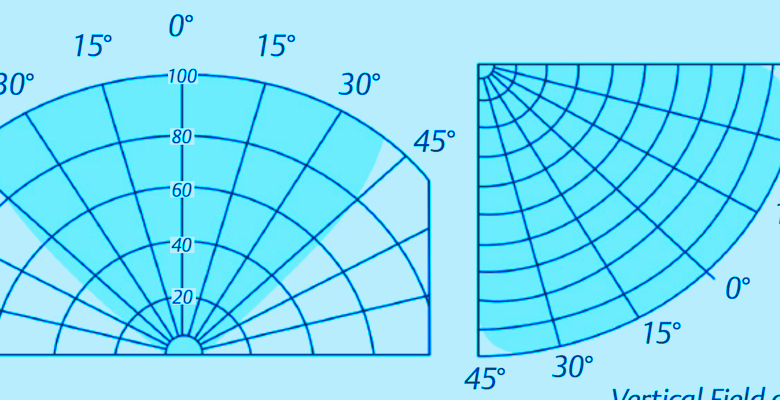
Original post: Sept 10, 2014 – Edward Marszal, (PEng, ISA 84 Expert)
Good fire and gas (FGS) mapping depends on a solid understanding of the performance attributes of the fire detection equipment that is being assessed along with a knowledge of the characteristics of the type and size of fire that is being detected. The starting point for quantifying the effectiveness of a fire detector is to review the results of its FM3260 performance test. This test will provide a graphical “map” of the area where a fire can be detected. The resulting figure, often referred to as a “cone of vision” is important information but is only a starting point. In order to make the information useful, the cone of vision information needs to be converted into a 3D representation and then “scaled” for the size of fire and species of chemical whose fire is desired to be detected. Most unsophisticated FGS mapping tools do not have the capability to do this automatically in their software and require the end users to create these cones of vision separately and then import them into their software, making these tools not much more useful than simply placing the cones of vision directly into the CAD application that generated the 3D model of the plant in the first place.
The cone of vision that is presented in most vendor’s product documentation is based on an FM 3260 performance test. In this test, data is collected for a 1 ft x 1 ft pan fire of n-heptane. If your fire detection needs are limited y o n-heptane in a 1×1 pan fire, then you should be set. Unfortunately, reality dictates that other fire sizes and other fire species are required to be detected. In higher risk areas, smaller fires need to be detected. In low risk areas, the number of fire detectors can be minimized by using a larger design basis fire in your mapping. The way to differentiate between different fire sizes is through the use of radiant heat output (RHO) as a parametric proxy for fire size. For n-heptane and other similar chemicals a 1ft x 1 ft pan fire generates about 40-50 kW (RHO). If you want to detect smaller or larger fire, you simply change the RHO setting for the size of fire that you would like to detect. Sophisticated software can automatically adjust the cone of vision (fully in three dimensions) for the different fire sizes.
Learn more about MicroWatt FGS Engineering and Design Services
Ref: Kenexis
Article By: Edward Marszal
Article Link: http://www.kenexis.com/understanding-fire-sizes-fgs-mapping/
